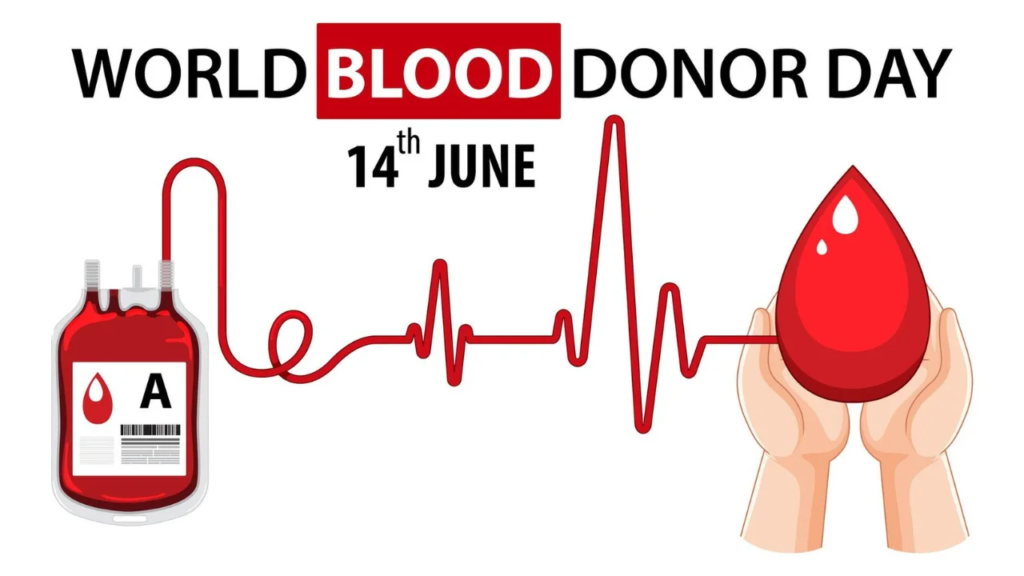
Table of Contents
- Introduction: The Journey Doesn’t End at the Chair
- Why Ongoing Advocacy Matters
- The Ripple Effect of a Single Voice
- Become a Blood Donation Influencer in Your Circle
- Organize and Promote Local Blood Drives
- Use Social Media as Your Advocacy Megaphone
- Partner with Schools, Colleges, and Workplaces
- Busting Myths in Everyday Conversations
- Volunteer Beyond Donating
- Advocate with Purpose During National Observances
- Share Your Story: The Power of Personal Testimony
- Final Thought: From Donor to Lifesaver Advocate
1. Introduction: The Journey Doesn’t End at the Chair
The needle goes in, the pint is drawn, the bandage wraps around your arm—and just like that, you’ve saved lives. But real impact isn’t limited to the donation chair. What happens next is just as powerful.
Becoming an advocate for blood donation means multiplying your influence, inspiring others, and building a culture where giving blood is as routine as giving back.
2. Why Ongoing Advocacy Matters
Blood isn’t something that can be manufactured or stockpiled indefinitely. The demand never stops, and the shelf life is short. That’s why advocates are as vital as donors. They keep the message alive, the supply flowing, and the public informed—long after awareness days are over.
3. The Ripple Effect of a Single Voice
One voice can echo across a city. When you speak up, share, post, or host a drive, you influence real lives—patients in surgery, accident victims, premature infants. One donor can save three lives. One advocate can inspire dozens of donors. The math speaks for itself.
4. Become a Blood Donation Influencer in Your Circle
You don’t need a blue checkmark to influence.
Start with those around you:
- Host donation challenges among friends or colleagues
- Educate your family about eligibility and the donation process
- Help first-timers feel confident and supported
Your story is often more persuasive than a billboard.
5. Organize and Promote Local Blood Drives
Bring the blood bank to your community.
Partner with:
- Local health centers
- Community halls
- College campuses
- Corporate offices
Help with logistics, rally volunteers, spread the word. These drives often serve as first-time experiences for hesitant donors—and they’ll thank you for making it easy.
6. Use Social Media as Your Advocacy Megaphone
Your voice online travels far. Use it to:
- Share statistics and urgent appeals
- Post photos of your donation with educational captions
- Create reels or infographics that answer common questions
- Tag and collaborate with blood donation organizations
Remember, the algorithm responds to purposeful noise.
7. Partner with Schools, Colleges, and Workplaces
Educational institutions and offices are powerful platforms for awareness:
- Create interactive presentations or Q&A sessions
- Set up booths during health fairs
- Initiate inter-department or inter-classroom donation competitions
Young minds and working professionals often become long-term donors when they learn early.
8. Busting Myths in Everyday Conversations
You don’t need a campaign to debunk misconceptions. Use lunch breaks, rideshares, or group chats to correct falsehoods like:
- “It’s painful”
- “I don’t have the right blood type”
- “I’m too old/young”
Be that voice of reason. Knowledge converts fear into action.
9. Volunteer Beyond Donating
If you can’t donate, or in between donations:
- Help at donor registration tables
- Hand out refreshments
- Translate for non-English-speaking donors
- Write blog posts or newsletters for blood banks
Time is as valuable as blood.
10. Advocate with Purpose During National Observances
World Blood Donor Day (June 14), National Blood Donor Month, and similar observances are high-visibility moments to make an impact.
- Launch campaigns
- Speak at events
- Host webinars
- Join panel discussions
These events offer perfect momentum to spotlight the cause.
11. Share Your Story: The Power of Personal Testimony
Nothing is more compelling than a lived experience.
- What motivated you to donate?
- How did it feel afterward?
- What did you learn from the process?
Use blogs, videos, podcasts, or live sessions. Your voice becomes a beacon for the next donor.
12. Final Thought: From Donor to Lifesaver Advocate
Being a donor saves lives. But being an advocate changes the world.
You have the power to spark a movement, change minds, and build a more generous, prepared society. Because while blood donation begins with one person, its legacy can stretch across nations.

